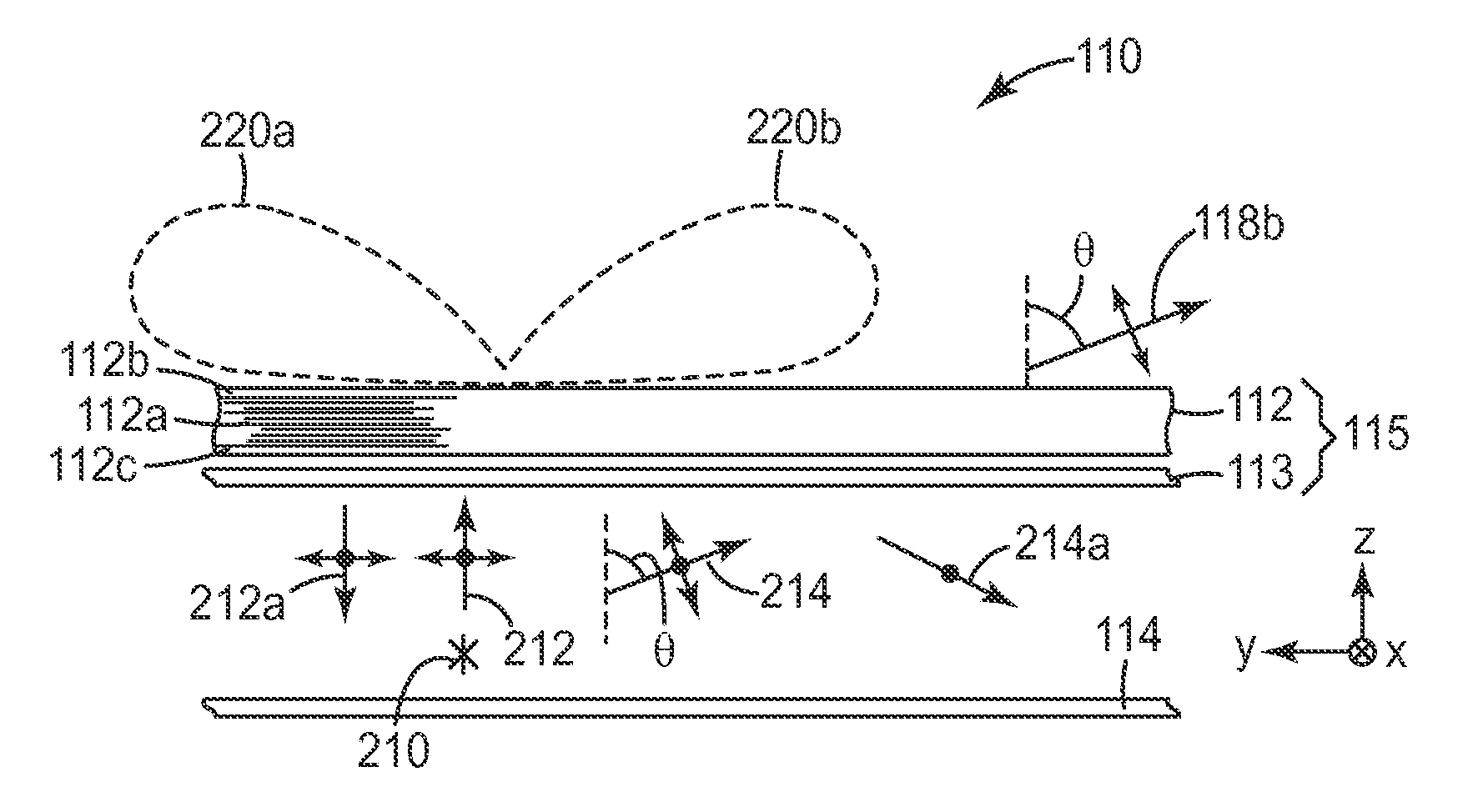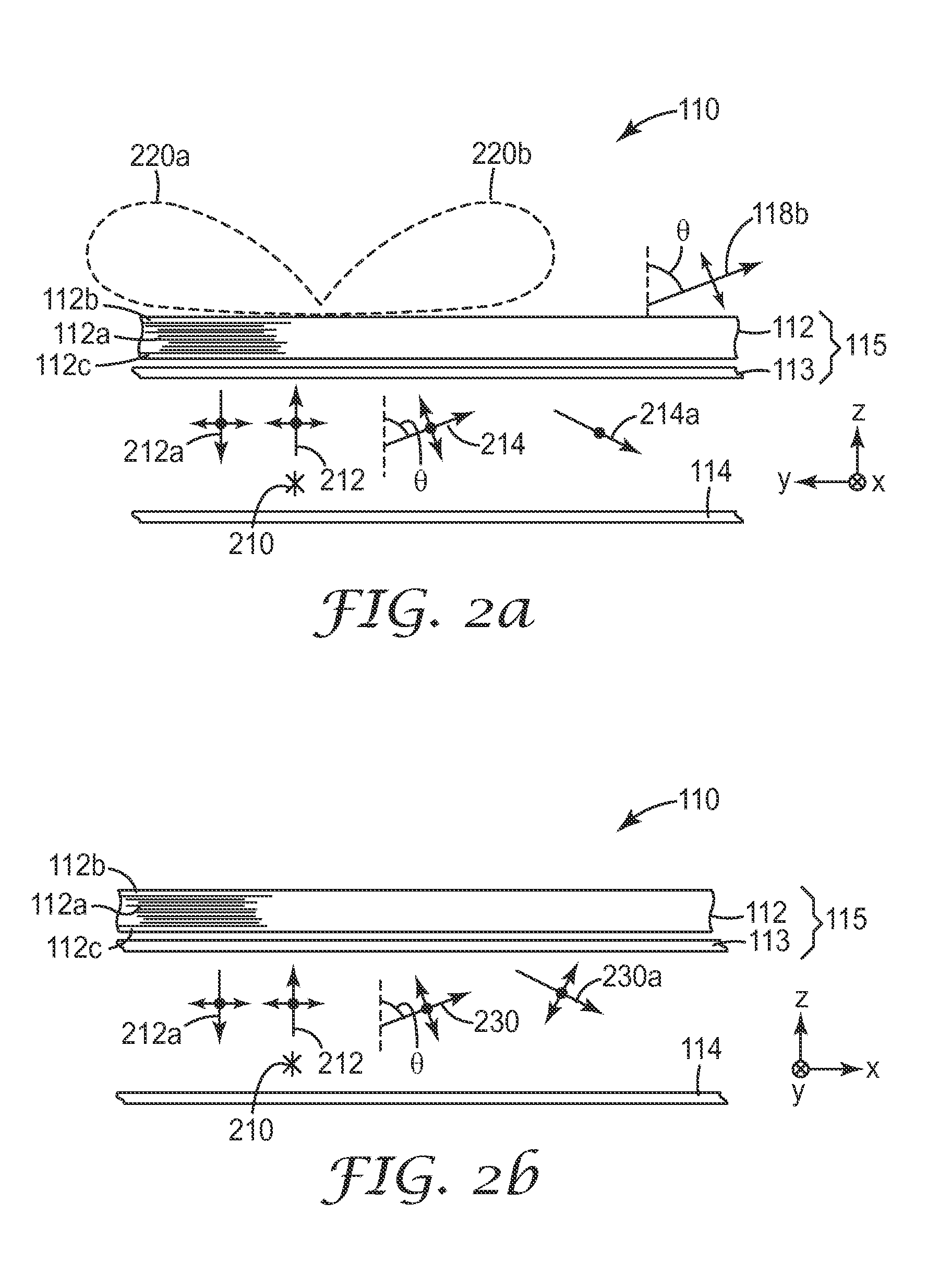Reflective film combinations with output confinement in both polar and azimuthal directions and related constructions
a technology of polar and azimuthal directions and output confinement, applied in the field of optical films, to achieve the effects of reducing glare, broadening the angular distribution of output light, and improving spatial uniformity
- Summary
- Abstract
- Description
- Claims
- Application Information
AI Technical Summary
Benefits of technology
Problems solved by technology
Method used
Image
Examples
Embodiment Construction
[0056]FIG. 1 depicts a simplified perspective view of a lighting system 110 that utilizes a reflective multilayer optical film 112 in combination with a polarizer 113, the combination of these elements being assigned reference numeral 115 and having a batwing transmission characteristic. The system 110 also includes a high reflectivity back reflector 114 which is substantially coextensive with and opposed to combination 115 so as to form a light recycling cavity 116 therebetween. Thus, light reflected by the combination 115 can be reflected again by back reflector 114 towards the combination 115 for another opportunity to be transmitted for improved system efficiency and reduced losses.
[0057]The film 112 and polarizer 113 are shown as separate films spaced apart slightly from each other for ease of illustration. In practice, these components may be so separated if desired, or they may be attached to each other e.g. by lamination or through one or more intermediate optical films or b...
PUM
| Property | Measurement | Unit |
|---|---|---|
| reflectivity R2 | aaaaa | aaaaa |
| incidence angle | aaaaa | aaaaa |
| incidence angle | aaaaa | aaaaa |
Abstract
Description
Claims
Application Information
 Login to View More
Login to View More - R&D
- Intellectual Property
- Life Sciences
- Materials
- Tech Scout
- Unparalleled Data Quality
- Higher Quality Content
- 60% Fewer Hallucinations
Browse by: Latest US Patents, China's latest patents, Technical Efficacy Thesaurus, Application Domain, Technology Topic, Popular Technical Reports.
© 2025 PatSnap. All rights reserved.Legal|Privacy policy|Modern Slavery Act Transparency Statement|Sitemap|About US| Contact US: help@patsnap.com



